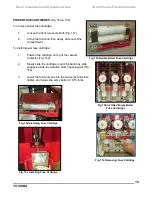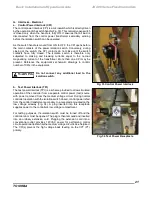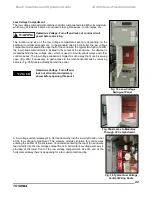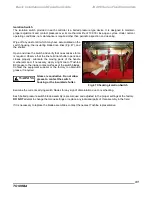
Basic Installation and Operation Guide
JK 400 Series Fixed Controllers
TOSHIBA
16
Controller Compartment
A. Isolation Switch
Power is switched on and off to the controller by a fix-mounted,
externally-operated, three-pole, non-load break, isolation
switch
(Fig. 2
4a). When the switch is in the off position,
incoming power is isolated from the controller compartment
interior by an automatic shutter. For additional s
afety, the load
terminals of the switch are automatically grounded when the
switch is off.
Three bolted-in current-limiting power fuses provide primary
short-circuit protection for the controller and load circuit. These
fuses are connected between the isolation switch and the
vacuum contactor. The vacuum contactor load terminals are
cabled through three metering current transformers (plus a
ground sensor, if supplied) to the outgoing load terminals.
Current transformers furnished are of the window (donut) or
Fig. 24a Isolation Switch
bar type. The isolation switch is mechanically interlocked with
the vacuum contactor and the compartment door. Details
of the interlocking are discussed in S
ection F.
The position of the isolation switch blades can be observed
through a window in the medium voltage compartment door,
along with viewing the green OPEN flags (Fig. 24b.)
. Thus, it
is possible to have visual evidence that the power source is
isolated before entering the medium voltage compartment.
The switch is also provided with lock-out provisions (
Fig. 25
).
The isolation switch has a maximum interrupting capacity of
0.4 amperes.
Fig. 24b Isolation Switch Open Indication Flags
Do not connect additional load to the
isolation switch.
Fig. 25 Isolation Switch Lockout
WARNING
















































